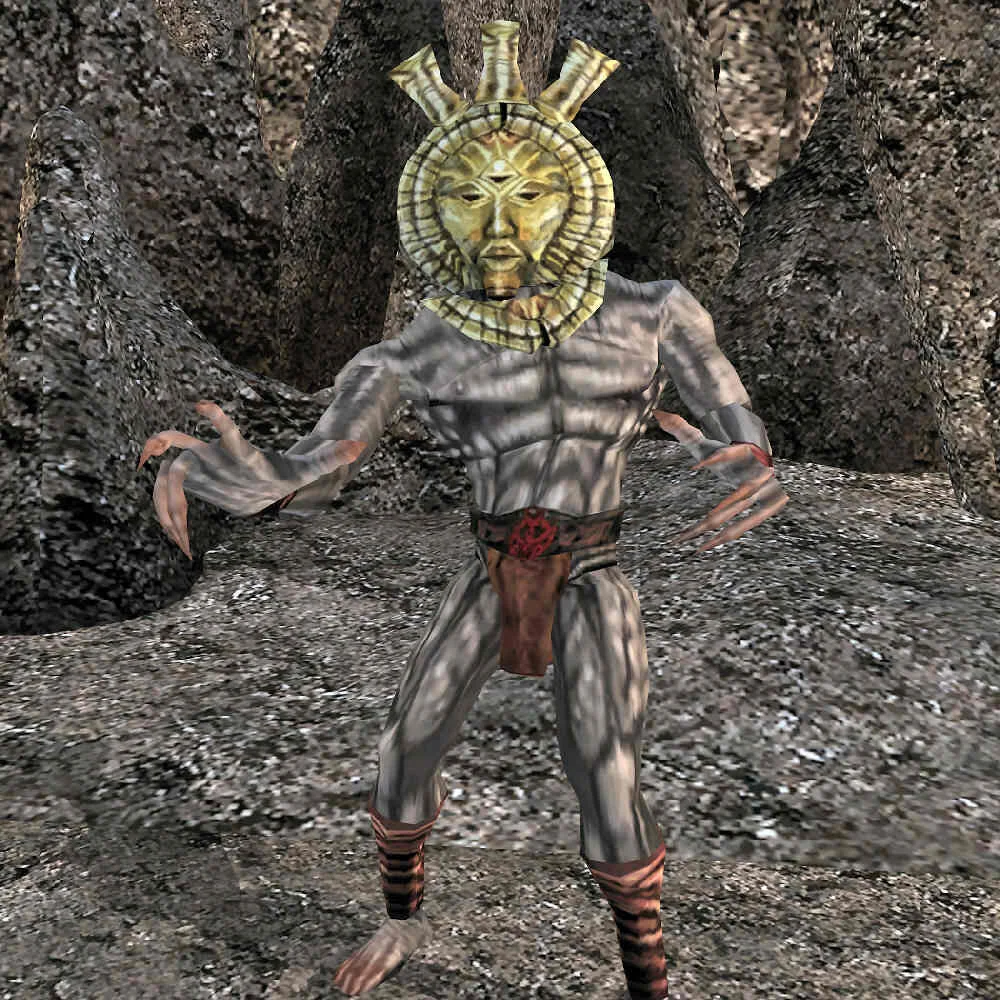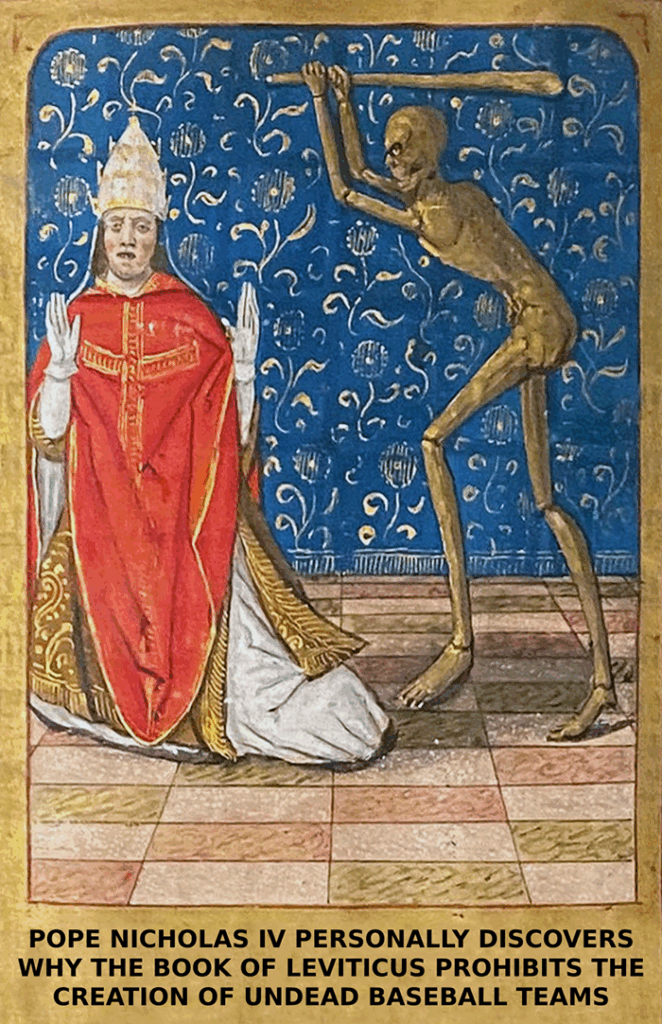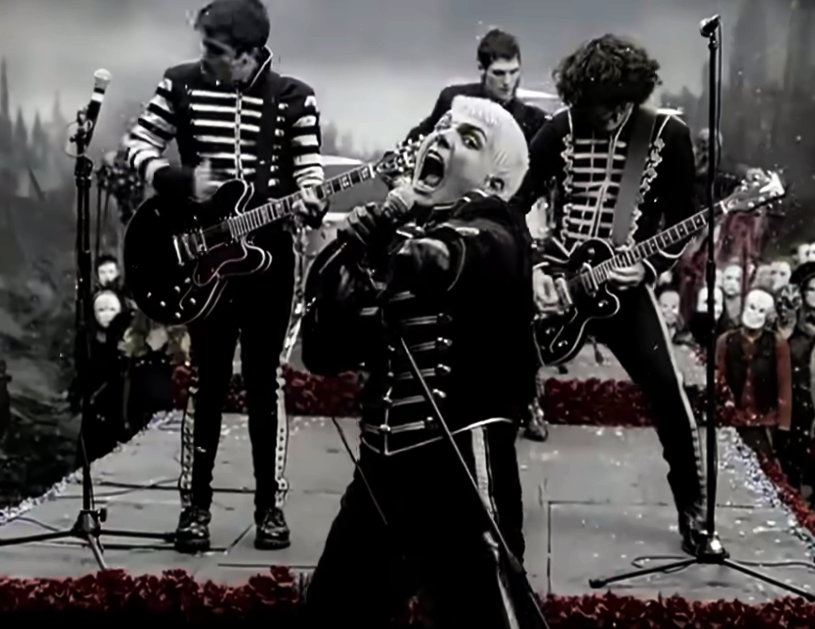You may well accuse me of seeing Dagoth Ur everywhere, but you have to admit that the new Ozostium Aranthus model for Necromunda has serious Dagoth Ur energy.


(‘serious Dagoth Ur energy’ is not a phrase anyone should ever have to type)
Disordered Thoughts and Curmudgeonly Ramblings
You may well accuse me of seeing Dagoth Ur everywhere, but you have to admit that the new Ozostium Aranthus model for Necromunda has serious Dagoth Ur energy.


(‘serious Dagoth Ur energy’ is not a phrase anyone should ever have to type)
A recent online conversation with a friend of mine in the UK…
Friend: [Son] keeps pestering me to see whether you’ve been to various liminal spaces in Australia. I tell him Australia is very big so it’s unlikely.
Me: I would be intrigued to know what liminal spaces might be available here. I didn’t know we had enough of them to count as ‘various’.
Friend: He was particularly interested in a car park in Melbourne!
Me: Well I have been to Melbourne a few times, so it’s theoretically possible that I’ve at least walked past the car park in question.
Me: Hang on, he’s not talking about the South Lawn Car Park at Melbourne University is he? Because if he is, then I have actually visited it!
Friend: Ah yes that is the one! He will be very excited!
Now what are the odds of that?

The Oksos Bekatalùn was created by the Zùrvàr scholar Cufà Bekatal Kuvàravik in -ST0281 (1781 CE) and adopted as the official standard for written Zùrvàr at the second conference of Wácuràda in -ST0139 (1839 CE).
Prior to this a number of writing systems, mostly borrowed from other cultures, were used by the Zùrvàr, however none were particularly well suited to the language, almost all being abjads and few differentiating between voiced and unvoiced consonants. After several attempts to adapt existing systems Cufà resolved to create his own from the ground up, although he leaned heavily on the Latin alphabets native to numerous alternate Earths.
In addition to resolving the issues around vowels and voicing Cufà assigned a mnemonic to each letter to aid memorisation. This made a major contribution to the rapid adoption of his oksos by a number of influential Houses and is regarded as the chief reason the Oksos Bekatalùn won out over the rival Oksos Màdi created by Malik Màdi Fìelisavik in -ST0290 (1790 CE).
Direction: In standard use Zùrvàr is written from left to right, although the reverse or even boustrophedon is used by some smaller Houses.
Final Va: Va is conventionally pronounced as /ə/ at the end of words, rather than /æ/.
Ru vs Ŕu: At the time of the oksos‘s creation the Zùrvàr language had a distinction between trilled and untrilled ‘r’. As such, Cufà included a distinct glyph for each. In the ensuing centuries this distinction has been almost completely lost, and Ru is now almost always used for both phonemes. Ŕu remains in the oksos but is used only for a small number of obscure words, or to create a sense of faux archaism, similar to the ‘ye olde’ style of English writing.
Þu vs Ðu: In casual Zùrvàr writing it is standard to use Ðu to represent both /θ/ and /ð/ with the reader relying on context to determine which is intended. The only common exception is the word yþỳsan (“respected/admired”) which is always written with Þu to avoid confusion with yðỳsan (“covered in fronds/stubs/fingers”). More formal writing and most printed materials maintain the distinction.

MacArthur Park is melting,
Green icing running down,
Somebody left the cake out in the rain,
And I don’t think that I can take it!
‘Cause it took so long to bake it!
And I’ll never have that recipe again!
MACARTHUR PARK!
MACARTHUR PAR-AR-ARK!!
IT’S MELTING!!

What the inside of my head sounds like on a good day (Pixies – Alec Eiffel)
What the inside of my head sounds like on an average day (People Like Us & Ergo Phizmiz – Pierrot’s Persecution Mania)
What the inside of my head sounds like on a bad day (Masonna – Wonderwall)
Nobody realizes that some people expend tremendous energy merely to be normal — Albert Camus
OK, it looks like the Wyrmlog is back, on new and improved hosting. Expect more updates soon.
I love Alex Lahey.
I love the song Don’t Be So Hard On Yourself by Alex Lahey.
I love the saxophone solo in the song Don’t Be So Hard On Yourself by Alex Lahey.
But I still NEEDED to make this.
I APOLOGISE FOR NOTHING!
It occurred to me the other day that if I were running a quiz night here in Perth I would not be able to resist the temptation to irritate everyone by including a round of questions about the city itself.
To prepare for this eventuality I have devised 10 questions that can be shoved into any quiz night you might be thinking about organising, and that you can challenge yourself with right now, should that be your idea of an enjoyable time.
(Answers supplied at the end)
1: The Perth CBD is located on the country of which Aboriginal nation? For an extra point, what is the indigenous name for Perth?
2: The natural spring at the foot of Mount Eliza is named after who?
3: What is the oldest building still standing in the Perth CBD?
4: What is the indigenous name for the Swan River?
5: In April 1993 Gary Hayes broke into the Irwin Barracks at Karrakatta and did what?
6: Why is Perth called “The City of Lights”?
7: What two cities rival Perth for the title of most isolated major city in the world?
8: In 1979 a series of plaques commemorating prominent Western Australians were placed along St George’s Terrace. Who’s plaque was removed in 2014?
9: What year did the Narrows Bridge open? For a bonus point what was it originally planned to be called?
10: The postcode 6161 covers what location?
Ready for the answers?
1: Perth is on the land of the Whadjuk people of the Noongar nation. 1 point for ‘Whadjuk’ or ‘Whadjuk Noongar’. Half a point for just ‘Noongar’. The indigenous name for Perth is Boorloo.
2: The spring is named after Governor Sir Edward Kennedy. 1 point for any mention of Kennedy, unless they clearly meant President Kennedy which gets no points!
3: The oldest building in the CBD is the Old Court House in Stirling Gardens.
4: The indigenous name for the Swan River is Derbarl Yerrigan. Any spelling that is clearly meant to be ‘Derbarl Yerrigan’ is acceptable.
5: In April 1993 Gary Hayes stole an Armoured Personnel Carrier (APC). An APC is not a tank but we’ll be nice and accept ‘he stole a tank’ as correct.
6: Perth is “The City of Light” because everyone left their lights on in 1962 for orbiting American astronaut John Glenn. As long as they get this story broadly right they get a point.
7: Honolulu and Auckland rival Perth’s claim to be the world’s most isolated major city. Half a point for each one.
8: Rolf Harris’s plaque was removed in 2014.
9: The Narrows Bridge was opened in 1959. For the bonus point it was planned to be called “The Golden West” bridge.
10: 6161 is the postcode of Rottnest Island.
There you go. How did you do?
When dealing with the political Right one should always remember that Conservatives don’t regard hypocrisy as a vice.
Conservatism is based on inherent hierarchies – the idea that some people, ideas and things are intrinsically and unchangeably better than other people, ideas and things. As such it’s only natural and correct that different standards and different rules should apply to different objects in the hierarchy.
The result is that criticising the Right for inconsistent principals and special exceptions simply doesn’t work. What we on the Left consider appalling hypocrisy, they consider simple and obvious common sense. Complaining and protesting about it is – to them – as ridiculous as complaining and protesting about the sky being blue. It does nothing to shame them or convince them to change their ways – rather it makes us look like idiots.
So fight against the hypocrisy of the Right (and the Left when it occurs – which it regularly does) with everything you have, but don’t waste your energy trying to shame them into stopping it.